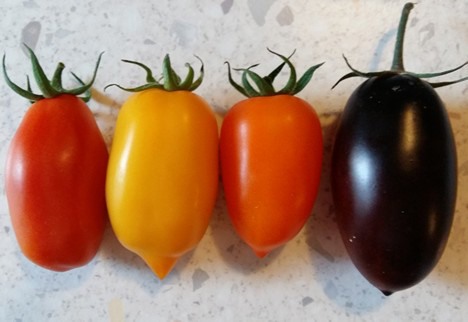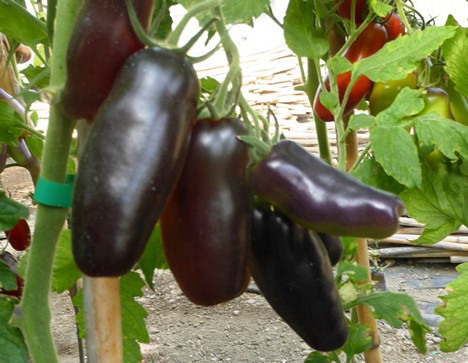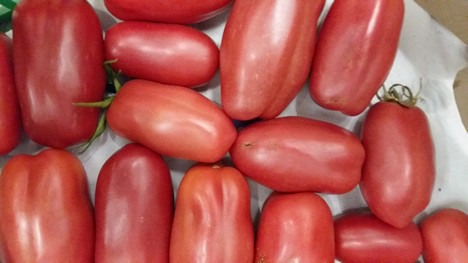San Marzano tomatoes have been genetically redrawn by a team of researchers from Enea, CREA, Polytechnic University of Valencia and Tuscia University to obtain new organoleptic qualities from both an aesthetic and nutritional point of view.
 Types of San Marzano tomatoes
Types of San Marzano tomatoes
 "We maintained the typical characteristics conveyed by the Vesuvius volcanic soil unaltered, but we improved carotenoid, chlorophyll and flavonoid content as well as the ripening process. Tuscia University focused on the vegetative, reproductive and genetic aspects, while ENEA focused on the chemical characterization of San Marzano genotype fruits, with particular reference to the molecules associated with color and flavor," explained Gianfranco Diretto (in the photo), researcher from ENEA.
"We maintained the typical characteristics conveyed by the Vesuvius volcanic soil unaltered, but we improved carotenoid, chlorophyll and flavonoid content as well as the ripening process. Tuscia University focused on the vegetative, reproductive and genetic aspects, while ENEA focused on the chemical characterization of San Marzano genotype fruits, with particular reference to the molecules associated with color and flavor," explained Gianfranco Diretto (in the photo), researcher from ENEA.
The study was published on Metabolites (Dono G., Rambla J.L., Frusciante S., Granell A., Diretto G., Mazzucato A. (2020b) Color mutations alter the biochemical composition in the San Marzano tomato fruit. Metabolites 10(3):110).

"Each mutation developed specific organoleptic and nutritional properties. For example, while yellow tomatoes are not as anti-oxidant due to the lower lycopene content, they acquire amino acids, vitamins, xanthophylls and quinones. Brown tomatoes acquire chlorophyll, which is generally absent in red fruits, as well as a higher sugar and vitamin E content, while purple ones acquire anthocyanins."
 Genome editing
Genome editing
"There is definitely room for improvement, but what we have done so far is a step towards the evolution of selections that can be produced commercially. These lines are also particularly suitable to create new genetic combinations and maybe new interesting phenotypes. The results will be used for future research that, also by using innovative technologies such as genome editing, will generate new tomato varieties in a quicker and safer manner compared to classic hybridization programs. What is more, these lines can be converted into new commercial varieties," stressed Andrea Mazzuccato (in the photo), researcher at the Department of Agricultural and Forestry Sciences at Tuscia University.

ENEA, with its specialist skills and advanced genetic, molecular biology and omic science technological platforms, infrastructures and professionalism, has been working in the advanced biotechnology sector for years, with its laboratory performing R&D activities for the promotion, sustainability and competitiveness of agri-food (green biotech), pharmaceutical (red biotech) and nano-technological (nano biotech) productions for the construction of new vegetable types and plants resistant to biotic and abiotic stress.
Research activities were conducted thanks to the support of Regione Lazio (FILAS "MIGLIORA" project), the Ministry of Agriculture (MiPAAF, Progetto Agroener), the Ministry of Education, University and Research (MIUR), the European Commission and , COST-Action Eurocaroten and Consorzio Interuniversitario per le Biotecnologie (CIB).
